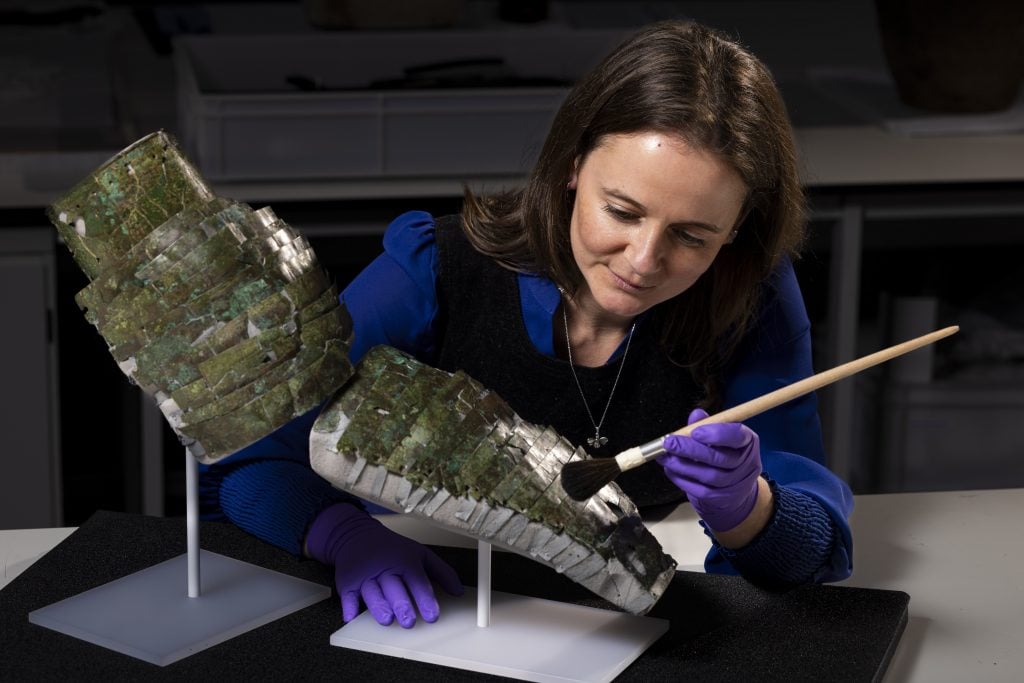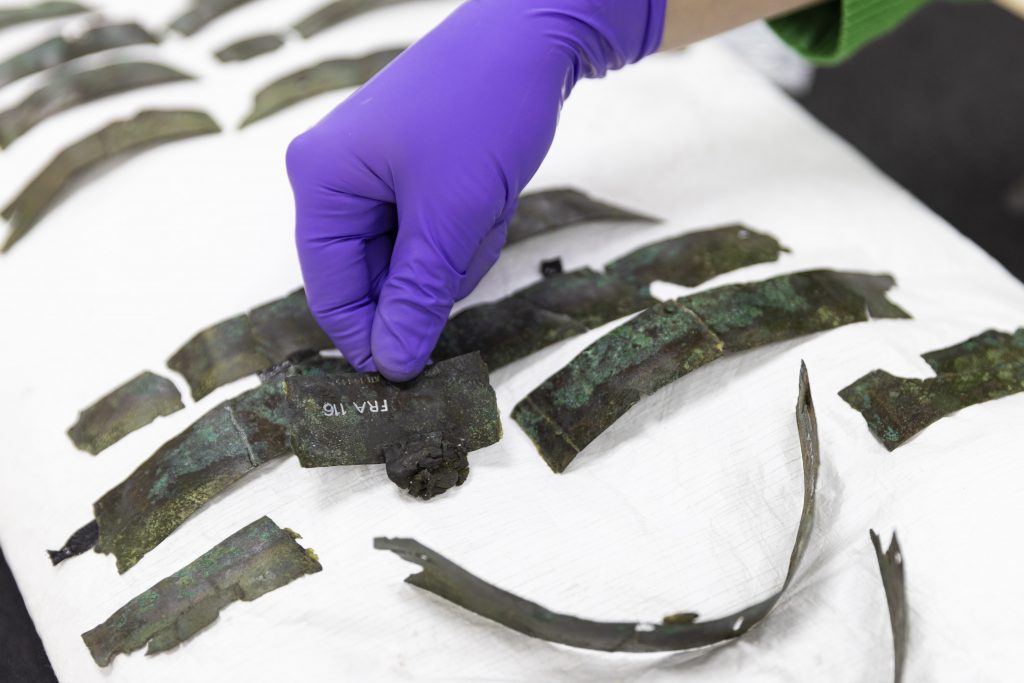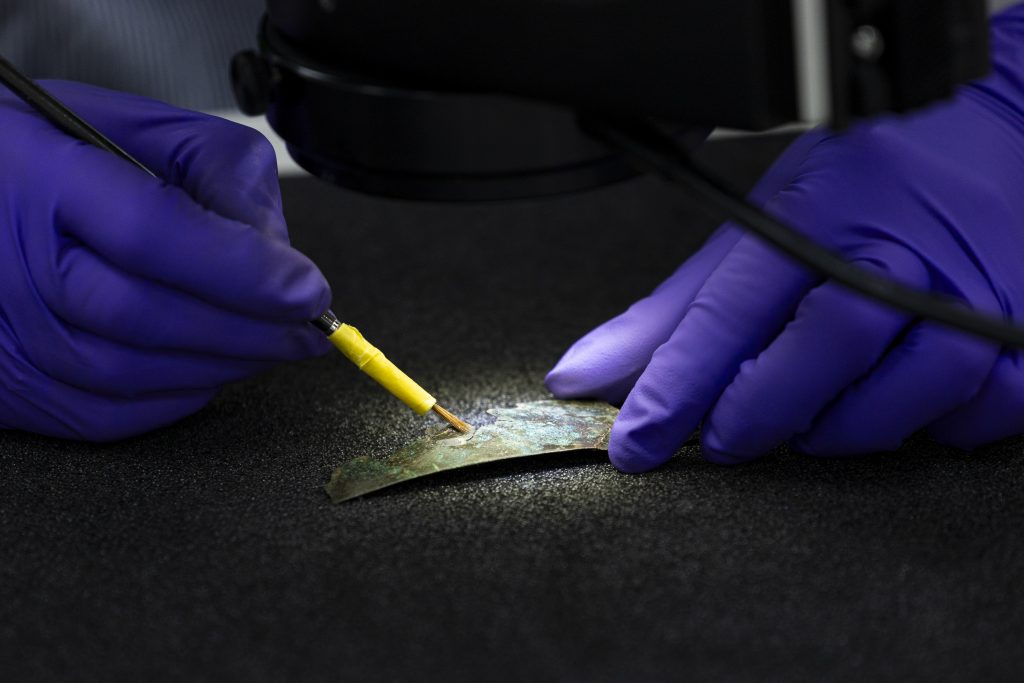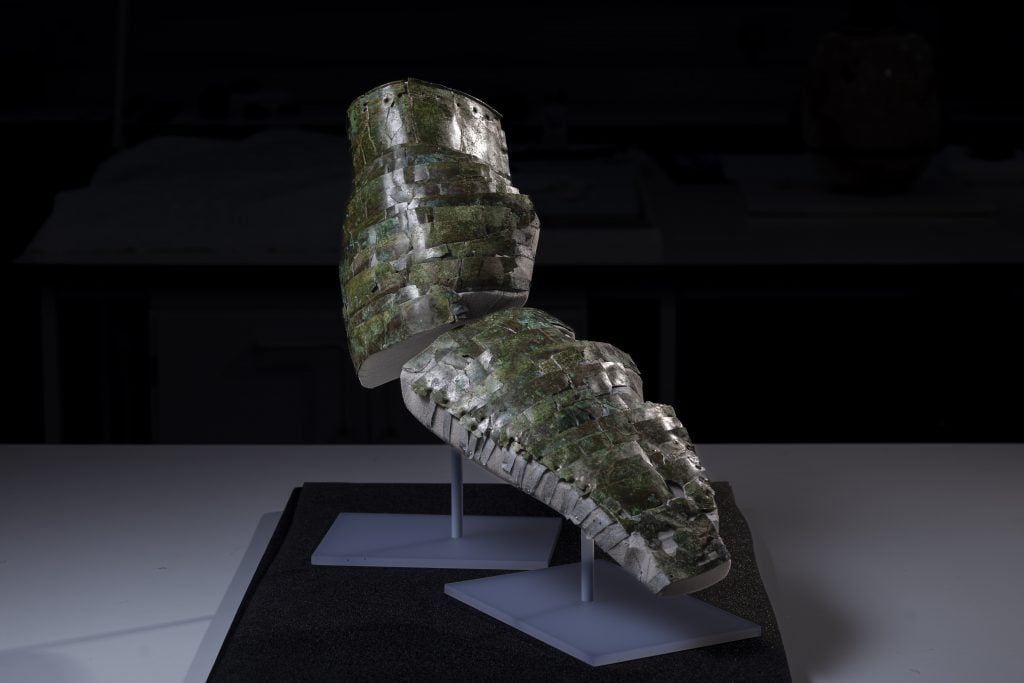Archaeology & History
An Ancient Roman Arm Guard Has Been Reconstructed Like a ‘Jigsaw Puzzle’ From Over 100 Fragments
The reconstructed artifact will go on view at the British Museum's "Legion: Life in the Roman Army."

The reconstructed artifact will go on view at the British Museum's "Legion: Life in the Roman Army."

Artnet News

For the first time in 2,000 years, a Roman arm guard can be seen in its entirety after a painstaking reconstruction that saw the assembly of dozens of found fragments.
The piece of brass armor was first discovered in 1906 by antiquary James Curle at the ancient Roman fort Trimontium, near Melrose within the Scottish Borders. It was found in more than 100 fragments, which nonetheless were in good condition, some with leather straps still attached. The pieces have been in the collection of the National Museums Scotland for more than a century.

Fragments of the Roman brass arm guard. Photo: © Duncan McGlynn.
After bringing together fragments from across the collection, conservators in Edinburgh spent weeks rebuilding the arm guard using the extant pieces. The resulting completed artifact, noted Fraser Hunter, the principal curator of prehistoric and Roman archaeology at NMS, represents the most intact example of a Roman brass arm guard, allowing us a glimpse into military life in the Roman Empire.
“You can picture the legionary who once wore it,” he said about the armor. “It was both protection and status symbol—brass was expensive and would have gleamed like gold on his sword arm. It offers a vivid connection to this important period when Scotland sat on the Roman Empire’s northern frontier.”

The Roman arm guard during conservation. Photo: © Duncan McGlynn.
While initially thought to be body armor or a thigh guard, the relic was only recently recognized for its true function in the 1990s. As worn by a Roman legionary, the armored sleeve would have stretched down from the wearer’s shoulder before ending in a thin square of metal intended to shield his hand—a design that was possibly inspired by the gear gladiators donned in the arenas.
“Approaching this ancient jigsaw puzzle required careful consideration and it was important to make sure we could display the piece in a manner as near as possible to how it would have looked 2,000 years ago,” said Bethan Bryan, assistant artifact conservator at NMS, in a statement.

The reconstructed Roman arm guard. Photo: © Duncan McGlynn.
The reconstructed arm guard will go on view at the British Museum’s forthcoming exhibition, “Legion: Life in the Roman Army,” opening February 1. The show will explore the life of the Roman soldier from enlistment to retirement through objects such as papyri letters written by troops in Roman Egypt, imperial armor, and tablets unearthed near Hadrian’s wall, that document the lives of everyday folk under Roman occupation.
For Richard Abdy, a curator at the British Museum, that the sleeve references the design of gladiator equipment is “unusual,” but offers tantalizing insight into how the training regime for the amphitheater may have also inspired the combats drills of the Roman army.
“The image of Roman soldiers and gladiators appropriately unite in one artifact,” he said in a statement, “two characteristic strands of the dark side of Roman civilization that have long fascinated public imagination.”
After the exhibition’s run, the reconstructed arm guard will be permanently displayed at the National Museum of Scotland.
More Trending Stories:
A Case for Enjoying ‘The Curse,’ Showtime’s Absurdist Take on Art and Media
Artist Ryan Trecartin Built His Career on the Internet. Now, He’s Decided It’s Pretty Boring
I Make Art With A.I. Here’s Why All Artists Need to Stop Worrying and Embrace the Technology
Sotheby’s Exec Paints an Ugly Picture of Yves Bouvier’s Deceptions in Ongoing Rybolovlev Trial
Loie Hollowell’s New Move From Abstraction to Realism Is Not a One-Way Journey